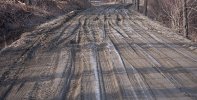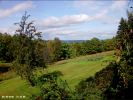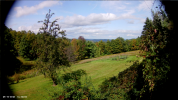You are using an out of date browser. It may not display this or other websites correctly.
You should upgrade or use an alternative browser.
You should upgrade or use an alternative browser.
Mobius Maxi F1.5 2.7k
- Thread starter TonyM
- Start date
TonyM
Well-Known Member
- Joined
- Jul 30, 2013
- Messages
- 5,446
- Reaction score
- 5,121
- Country
- United Kingdom
- Dash Cam
- Mobius 1S Telephoto, A139, B1W
I think I need to invest in some more DIY tools for such CPL and mounting projects. A dremel (or similar) sounds ideal for working on these little cameras. Electric or cordless?
Last edited:
Dashmellow
Well-Known Member
- Joined
- Sep 22, 2013
- Messages
- 18,578
- Reaction score
- 19,188
- Location
- Uncanny Valley (●_●)
- Country
- United States
- Dash Cam
- Umpteen
From what I've seen of the Maxi, the sensor is better than most high resolution sensors out there in low light. However, it's not as good as the best. In my opinion, the 2 stops of light you lose from leaving the CPL on will probably degrade the quality of the night picture significantly. We'll only know for definite when one or two people get one on and start testing, espcially in sub urban low light and roads with no lighting.
I think you've misread my post. My reference to the CPL potentially shifting was for a sliding bracket design. A lens cap based CPL isn't going to shift and a hinged design probably highly unlikely over all but the severest of bumps (The 3D printed design looks like it might have a catch to hold it closed), open may be a different matter, but most bump acceleration in a car is vertical in nature so a side hinged bracket would be unlikely to experience the same level of force in the direction of opening / closing.
OK, I see that I did misunderstand your post. You mentioned my name and shifted the subject to slding filters in the following sentence. Well, perhaps I shouldn't be replying to posts at 5am.
Your logic about the severity of bumpy roads, "bump acceleration in a car" or lateral "G" forces and the like is rather amusingly provincial. It is wrong to assume that everyone else in the world is going to experience the same genteel driving conditions that you experience in the UK. As I've explained many times I reside in a mountainous rural area where I live on and drive on bumpy dirt roads every day. Depending upon the weather conditions, temperature, time of year and road crew maintenance schedule, the road conditions vary from tarmac like smoothness to rutted washboards, pot holes, gravel swales and deep mud along with all kinds of other road surface hazards such as deep packed ridges of ice and frozen snow. Dash cam vibration, shock and road impact has been a primary concern that I've had to contend with ever since I first became involved with these cameras. And many people around the world live in urban areas with large sections of poorly maintained roads full of potholes at every turn.
Each year, early Spring, we experience a phenomenon called "Mud Season" where the frost is working its way out of the ground, snow and rain are often falling and the roads turn into a hellish mess that then freezes solid every night only to melt the next day (or not). You want some bumps and lateral G forces while driving, you won't find better!

Last edited:
Dashmellow
Well-Known Member
- Joined
- Sep 22, 2013
- Messages
- 18,578
- Reaction score
- 19,188
- Location
- Uncanny Valley (●_●)
- Country
- United States
- Dash Cam
- Umpteen
I think I need to invest in some more DIY tools for such CPL and mounting projects. A dremel (or similar) sounds ideal for working on these little cameras. Electric or cordless?
Highly recommended. A year or so ago I purchased a WEN 2305 Rotary Tool Kit with Flex Shaft on Amazon for less than 21 USD. It's an amazingly nice high quality knock-off of a Dremel for an amazingly low price. The supplied tools and accessories are serviceable but not the finest quality but they are universal fit from the original Dremel tool and others on the market and can be purchased anywhere. Banggood has a fantastic collection of rotary tool accessories for sale at low prices and I've ordered all sorts of useful stuff that I use for various projects. I used the flexible shaft and the little drum sander attachment I mentioned previously to work on the lens cap CPL project.
I don't happen to see the WEN 2305 on Amazon UK but there are many suitable alternatives. Of course, if money is no object you could always buy a genuine Dremel. I recommend a corded tool as they tend to have more torque.
Last edited:
Dashmellow
Well-Known Member
- Joined
- Sep 22, 2013
- Messages
- 18,578
- Reaction score
- 19,188
- Location
- Uncanny Valley (●_●)
- Country
- United States
- Dash Cam
- Umpteen
@TonyM, I think this may be the same (or very similar) kit as the WEN product I purchased but under a different brand name. It's 240V vs 110V.
I purchased a low priced one because I figured it would only see occasional use and so far that logic along with the decent quality of the tool that showed up have confirmed my decision as a wise one.
https://www.amazon.co.uk/gp/B0796TXJBW
I purchased a low priced one because I figured it would only see occasional use and so far that logic along with the decent quality of the tool that showed up have confirmed my decision as a wise one.
https://www.amazon.co.uk/gp/B0796TXJBW
Last edited:
Dashmellow
Well-Known Member
- Joined
- Sep 22, 2013
- Messages
- 18,578
- Reaction score
- 19,188
- Location
- Uncanny Valley (●_●)
- Country
- United States
- Dash Cam
- Umpteen
Sliced off the inner lip and stuck the CPL back using UV glue. Once the front plastic is removed, turn the leftover rubber ring inside out, much easier to work on.
Turning the lens cap inside out to work on it sounds like a clever idea. So, yes, as you may have already discovered if you cut down or sand down the inner lip on the lens cap you'll be able to push the lens cap CPL all the way into the lens bezel. I recommend not removing the lip all the way since it seems to help hold the cap in place. I can confirm that with the lens cap CPL pressed all the way onto the lens there is no vignetting.
Harsh
Well-Known Member
Turning the lens cap inside out to work on it sounds like a clever idea. So, yes, as you may have already discovered if you cut down or sand down the inner lip on the lens cap you'll be able to push the lens cap CPL all the way into the lens bezel. I recommend not removing the lip all the way since it seems to help hold the cap in place. I can confirm that with the lens cap CPL pressed all the way onto the lens there is no vignetting.
I sliced the lip clean off, haven't tried fitting it yet.
Dashmellow
Well-Known Member
- Joined
- Sep 22, 2013
- Messages
- 18,578
- Reaction score
- 19,188
- Location
- Uncanny Valley (●_●)
- Country
- United States
- Dash Cam
- Umpteen
I sliced the lip clean off, haven't tried fitting it yet.
If you should find that you need a little of the lip remaining for secure CPL installation replacement lens caps for the Maxi are widely available.
Harsh
Well-Known Member
If you should find that you need a little of the lip remaining for secure CPL installation replacement lens caps for the Maxi are widely available.
I have a couple of lens caps for other Mobius lenses, if needed maybe one of them fits.
Dashmellow
Well-Known Member
- Joined
- Sep 22, 2013
- Messages
- 18,578
- Reaction score
- 19,188
- Location
- Uncanny Valley (●_●)
- Country
- United States
- Dash Cam
- Umpteen
OK folks, I have to offer a bit of a correction about my results with the CPL. @Harsh's original assessment that this CPL concept causes major vignetting was essentially correct, with qualifications.
Mounting the CPL closer to the lens with an altered lens cap makes no difference.
I just discovered that with the camera set to record 1920x1080 you will indeed get serious vignetting with this CPL approach. The testing I originally did yesterday and this morning was with the camera set to 1920x1440 which yielded no vignetting. Results in 2704x1524 (2.7K) are nearly the same as 1920x1080 only with a slightly wider FOV.
Seems the settings are using different portions of the full sensor to create the image similar to the M1 in wide/narrow mode. (pixel binning)
This result seems to suggest that ANY CPL solution for the Maxi B lens camera will require a CPL that is directly up against the front of the lens and probably at least somewhat wider in diameter.
Notice how the 1920x1440 FOV is cropped and provides a distinctly telephoto effect compared to the other two settings. I was not previously aware that these resolution settings changed the "apparent" focal length and FOV of the lens to this extent.
1920x1440

1920x1080

2704x1524 (2.7K)

Mounting the CPL closer to the lens with an altered lens cap makes no difference.
I just discovered that with the camera set to record 1920x1080 you will indeed get serious vignetting with this CPL approach. The testing I originally did yesterday and this morning was with the camera set to 1920x1440 which yielded no vignetting. Results in 2704x1524 (2.7K) are nearly the same as 1920x1080 only with a slightly wider FOV.
Seems the settings are using different portions of the full sensor to create the image similar to the M1 in wide/narrow mode. (pixel binning)
This result seems to suggest that ANY CPL solution for the Maxi B lens camera will require a CPL that is directly up against the front of the lens and probably at least somewhat wider in diameter.
Notice how the 1920x1440 FOV is cropped and provides a distinctly telephoto effect compared to the other two settings. I was not previously aware that these resolution settings changed the "apparent" focal length and FOV of the lens to this extent.
1920x1440

1920x1080

2704x1524 (2.7K)

Last edited:
dirkzelf
Well-Known Member
- Joined
- Nov 16, 2012
- Messages
- 1,787
- Reaction score
- 869
- Country
- Netherlands
Dashmellow
Well-Known Member
- Joined
- Sep 22, 2013
- Messages
- 18,578
- Reaction score
- 19,188
- Location
- Uncanny Valley (●_●)
- Country
- United States
- Dash Cam
- Umpteen
Was thinking how to go about adjusting the CPL. The Android app doesn't work for me and as per reports webcam mode locks up the camera.
Although my Maxi has locked up a number of times for various reasons I've had no problem with the Maxi in webcam mode on a Mac using QuickTime Player. If anyone needs instructions just speak up and I'll explain how to do it in detail.
Aside from that here's a little trick anyone can try (with either the Mobius 1 or the Maxi) that will make it easier to get the camera to function in web cam mode. Remove the memory card BEFORE you hook the camera up to your computer. When you launch whatever software (Mac or Windows) that you use for web cam functionality the Mobius camera will be seen as a web cam only, NOT a dash or action cam. On the Mac removing the memory card causes the Maxi to automatically open in a window in QuickTime Player when you select "New Movie Recording" without having to do anything else.
TonyM
Well-Known Member
- Joined
- Jul 30, 2013
- Messages
- 5,446
- Reaction score
- 5,121
- Country
- United Kingdom
- Dash Cam
- Mobius 1S Telephoto, A139, B1W
That's a shame as I was thinking about going down that route to fit a CPL.This result seems to suggest that ANY CPL solution for the Maxi B lens camera will require a CPL that is directly up against the front of the lens and probably at least somewhat wider in diameter.
I looked at the Viofo CPL tonight and noticed that the top and bottom 'sides' are not exactly 90deg to the front. Thus the CPL will be angled if I fit either the top or bottom side parallel to the camera edge.
Harsh
Well-Known Member
Although my Maxi has locked up a number of times for various reasons I've had no problem with the Maxi in webcam mode on a Mac using QuickTime Player. If anyone needs instructions just speak up and I explain how to do it.
Aside from that here's a little trick anyone can try (with either the Mobius 1 or the Maxi) that will make it easier to get the camera to function in web cam mode. Remove the memory card BEFORE you hook the camera up to your computer. When you launch whatever software (Mac or Windows) that you use for web cam functionality the Mobius camera will be seen as a web cam only, NOT a dash or action cam. On the Mac removing the memory card causes the Maxi to automatically open in a window in QuickTime Player when you select "New Movie Recording" without having to do anything else.
I've been using Quick Camera for webcam mode. No hurry, the A129 has a CPL on, plus anyway your testing show there's vignetting with 2.7k.
Dashmellow
Well-Known Member
- Joined
- Sep 22, 2013
- Messages
- 18,578
- Reaction score
- 19,188
- Location
- Uncanny Valley (●_●)
- Country
- United States
- Dash Cam
- Umpteen
I've been using Quick Camera for webcam mode. No hurry, the A129 has a CPL on, plus anyway your testing show there's vignetting with 2.7k.
Try the trick without the memory card in the camera when connecting to web cam mode. I do it routinely now.
Harsh
Well-Known Member
Try the trick without the memory card in the camera when connecting to web cam mode. I do it routinely now.
I've always connected the M1 with the card removed.
country_hick
Well-Known Member
- Joined
- Dec 10, 2014
- Messages
- 2,188
- Reaction score
- 1,964
- Country
- United States
Could the problem be as simple as you need a 25, 27, or 28mm cpl instead of a 24mm cpl like you used?
OK folks, I have to offer a bit of a correction about my results with the CPL. @Harsh's original assessment that this CPL concept causes major vignetting was essentially correct, with qualifications.
Mounting the CPL closer to the lens with an altered lens cap makes no difference.
I just discovered that with the camera set to record 1920x1080 you will indeed get serious vignetting with this CPL approach. The testing I originally did yesterday and this morning was with the camera set to 1920x1440 which yielded no vignetting. Results in 2704x1524 (2.7K) are nearly the same as 1920x1080 only with a slightly wider FOV.
Seems the settings are using different portions of the full sensor to create the image similar to the M1 in wide/narrow mode. (pixel binning)
This result seems to suggest that ANY CPL solution for the Maxi B lens camera will require a CPL that is directly up against the front of the lens and probably at least somewhat wider in diameter.
Notice how the 1920x1440 FOV is cropped and provides a distinctly telephoto effect compared to the other two settings. I was not previously aware that these resolution settings changed the "apparent" focal length and FOV of the lens to this extent.
1920x1440
View attachment 41860
1920x1080
View attachment 41861
2704x1524 (2.7K)
View attachment 41867
Dashmellow
Well-Known Member
- Joined
- Sep 22, 2013
- Messages
- 18,578
- Reaction score
- 19,188
- Location
- Uncanny Valley (●_●)
- Country
- United States
- Dash Cam
- Umpteen
Could the problem be as simple as you need a 25, 27, or 28mm cpl instead of a 24mm cpl like you used?
No.
Dashmellow
Well-Known Member
- Joined
- Sep 22, 2013
- Messages
- 18,578
- Reaction score
- 19,188
- Location
- Uncanny Valley (●_●)
- Country
- United States
- Dash Cam
- Umpteen
I've always connected the M1 with the card removed.
Oh, Cool! I only stumbled on it a few months ago.
